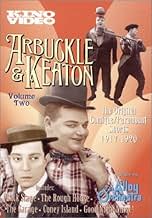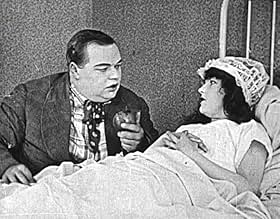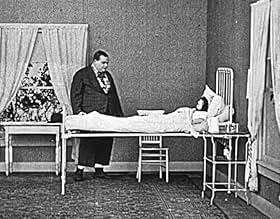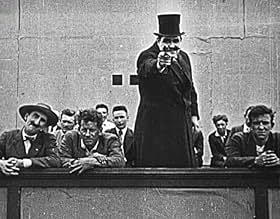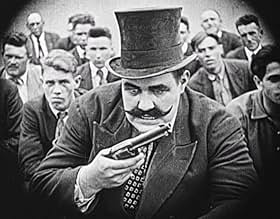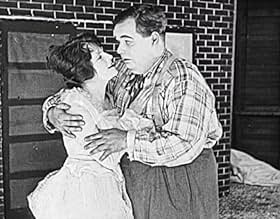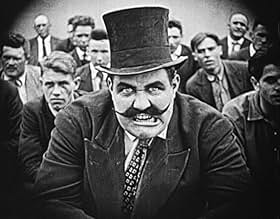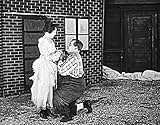अपनी भाषा में प्लॉट जोड़ेंWorking their fingers to the bone to prepare the set for an upcoming performance, the enthusiastic stagehands, Roscoe and Buster, find themselves on stage when the cast quits. However, is wi... सभी पढ़ेंWorking their fingers to the bone to prepare the set for an upcoming performance, the enthusiastic stagehands, Roscoe and Buster, find themselves on stage when the cast quits. However, is will alone enough to earn a big round of applause?Working their fingers to the bone to prepare the set for an upcoming performance, the enthusiastic stagehands, Roscoe and Buster, find themselves on stage when the cast quits. However, is will alone enough to earn a big round of applause?
- निर्देशक
- लेखक
- स्टार
फ़ीचर्ड समीक्षाएं
Arbuckle and Keaton are stage hands getting ready for the upcoming show's star performer, a strongman who turns out to be very abusive toward his female assistant. Well before the 'Me-Two' Movement, the pair take it upon themselves to set the larger man straight. Because no one treated him like that before, he refuses to go on the stage. So Arbuckle and company decide to improvise the entertainment, much to the delight of the sell-out crowd. Trouble is, Mr. Muscleman doesn't appreciate their act.
A notable sequence shows one of the stage set's large false wall designed as a side of a house collapsing onto Arbuckle, who is standing underneath it. Thankfully, an open window frame on the second floor falls directly on top of him, allowing Fatty to escape without a scratch. Keaton remembered that trick and used it twice in his movies when he went solo, most famously in 1928's 'Steamboat Bill, Jr.'
The setting, with Fatty and Buster working "Back Stage" for a vaudeville show, lends itself well to humor and variety, and this setting is quite interesting in its own right. If you watch closely, you'll also notice a number of gags used here that Keaton later refined and used to even greater effect later in some of his own short features.
There are several good sequences, and they provide a good showcase for both Arbuckle and Keaton to display their considerable array of comic talents. Al St. John and the rest of the supporting cast also get a couple of good moments. It's great comedy, and a lot of fun to watch.
The darkness in the comedy is ironic, because by bosom buddy Buster Keaton's account, in real life "Arbuckle was that rarity, a true jolly fat man. He had no meanness, malice, or jealousy in him. Everything seemed to amuse and delight him. He was free with his advice and too free in spending and lending money. I could not have found a better-natured man to teach me the movie business, or a more knowledgeable one. We never had an argument."
Fresh off being away for nearly a year in the army, Keaton stayed loyal to Arbuckle despite offers for significantly more money elsewhere. Change was in the wind for Arbuckle, however, as he had changed studios and lost many of the other people in his ensemble, including Alice Lake and (very soon) even nephew Al St. John, who barely appears here. Arbuckle was ill during production, delaying it, and perhaps all of these things led to a rather average film. This was a year before he would sign a mega-contract with Paramount, and two years before the Virginia Rappe scandal would unfairly ruin him.
There are some of the old Arbuckle standbys, including him and Keaton dressing up in drag and dancing, not much of which is very inspired. The limber (and likely coded gay) dancer John Coogan (Jackie's father) does the splits and various maneuvers both Arbuckle and Keaton try to follow, which was amusing. One of the funnier bits was an early version of a sign changing message when a portion of it is concealed, when a posting goes from "Gertrude McSkinny famous star who will play the little laundress first time here tomorrow at 2 pm" to the decidedly more ribald "Miss Skinny will undress here at 2pm."
The best, however, was the bit with the wall of a stage set falling down and just missing Arbuckle, who happens to be standing where one of the window cutouts is. Keaton of course would use this to much more dramatic effect in Steamboat Bill, Jr nine years later, and it was pretty cool to see this early version. Between this and the early version of Chaplin's bread roll dance in The Rough House (1917), you can really see the influence Arbuckle had on these giants of comedy, and his own place alongside them.
On-stage, too, they exploit every last opportunity for misadventure, from heckling audience members to collapsing scenery (including an early example of Keaton's famed "falling edifice" gag, best-known from 1928's Steamboat Bill Jr.), with the usual amount of reckless tumbles and messy melees thrown in for good measure. More balanced than some of the duo's earlier pictures, with a number of fresh new bits, but it's missing a certain spark. Maybe their rigorous filming schedule (a dozen comedies together in the preceding two years) was beginning to take a toll.
क्या आपको पता है
- ट्रिवियाIncluded in "Buster Keaton: The Shorts Collection" blu-ray set, released by Kino.
- भाव
Strongman's Assistant: [the act quits, to Buster and Fatty] We don't need them. Let's do the show ourselves!
- कनेक्शनFeatured in Birth of Hollywood: एपिसोड #1.2 (2011)
टॉप पसंद
विवरण
- रिलीज़ की तारीख़
- कंट्री ऑफ़ ओरिजिन
- भाषा
- इस रूप में भी जाना जाता है
- Keaton entre bastidores
- फ़िल्माने की जगहें
- उत्पादन कंपनी
- IMDbPro पर और कंपनी क्रेडिट देखें
- चलने की अवधि26 मिनट
- ध्वनि मिश्रण
- पक्ष अनुपात
- 1.33 : 1
इस पेज में योगदान दें


